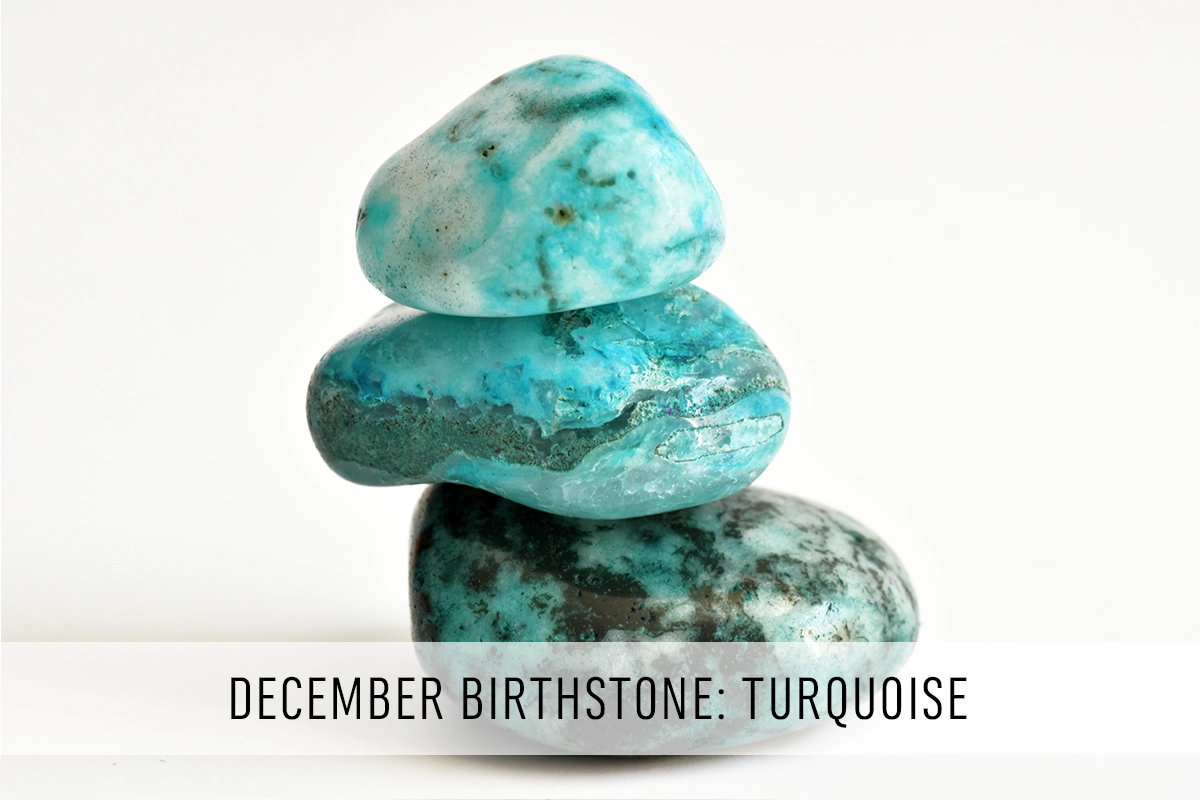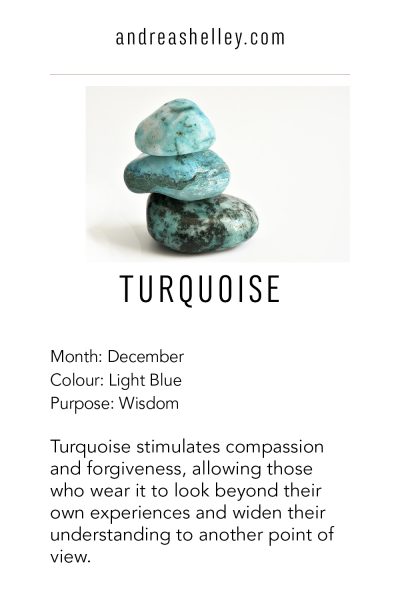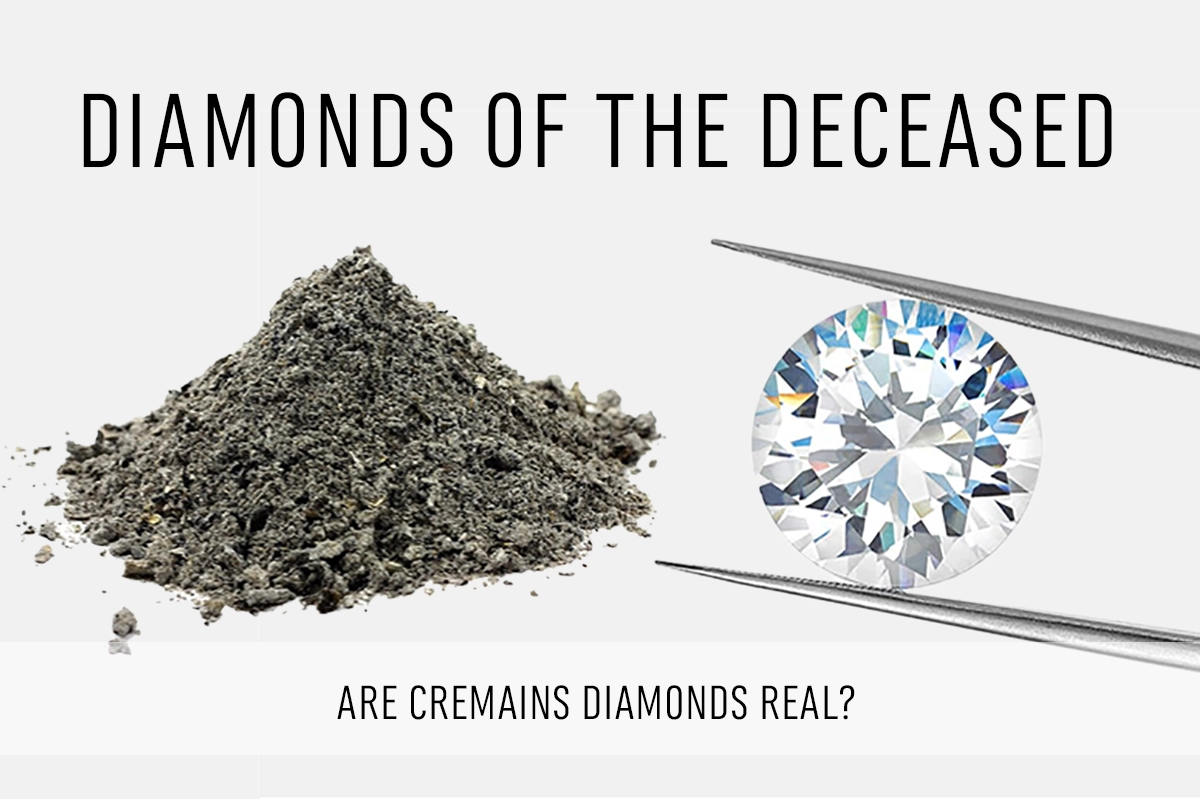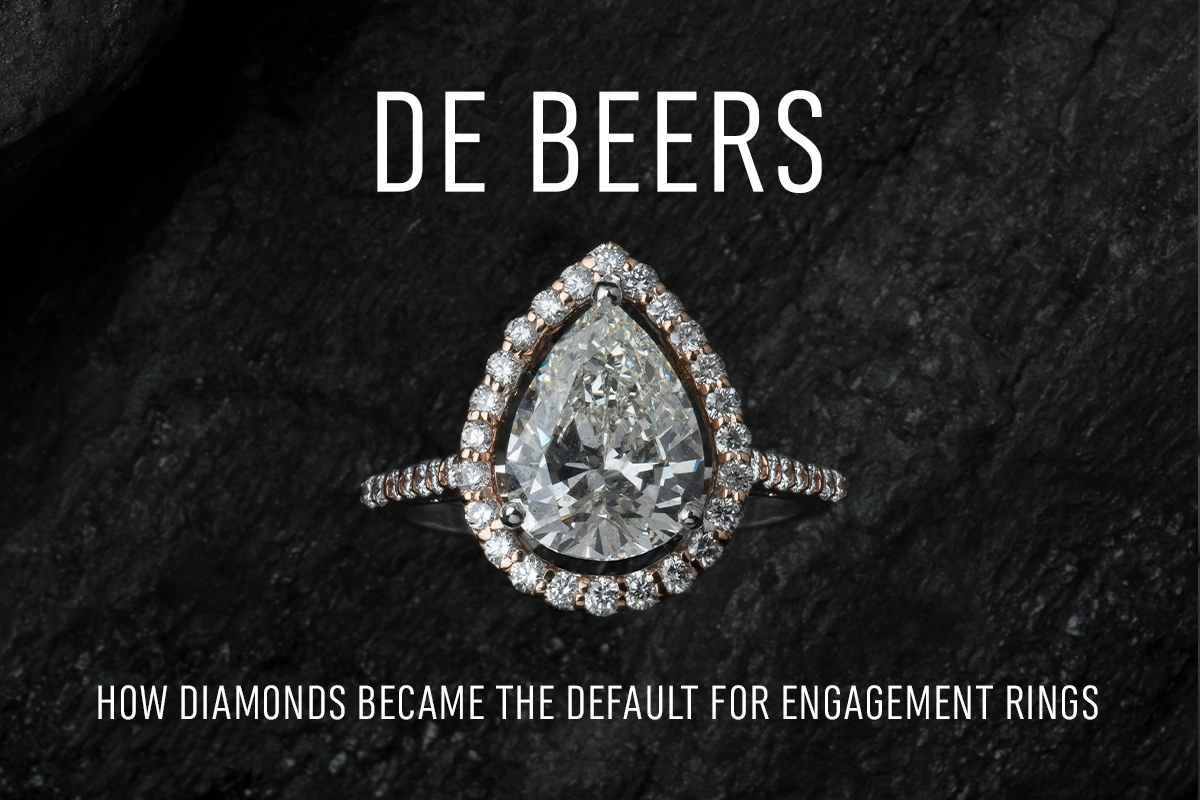
Representing December, turquoise is an opaque gem with colours that range from blue to green, often paired with distinct black/brown veining (matrix) that is characteristic of the various mines where it’s found.
Turquoise has perhaps one of the richest mythologies of all of the birthstones. This gem has withstood the test of time, being one of the earliest stones in recorded histories across the world, yet maintains strong cultural significance even today.
Whether or not you’re a December baby, wearing turquoise jewelry can act as a powerful talisman of wisdom and protection.
Table of Contents
December Birthstone History
The name Turquoise comes from the French phrase, pierre turquoise, which translates to “Turkish stone.” This is because this beautiful gemstone made its way to Europe from the mines in central Asia via trade routes through Turkey.
For centuries, turquoise has held a special significance for cultures spanning the globe. Civilizations across Africa, Asia, South America, and North America independently recognized its allure and incorporated it into their jewelry, artworks, and mythology.
Turquoise in Native American Folklore
One culture that has a deep connection with turquoise is the Native Americans. Turquoise has been an integral part of Native American folklore for centuries. According to tradition, wearing turquoise can bring good luck, happiness, and protection from evil. In some tribes, warriors wore turquoise on their bodies to bring them strength and protection in battle. In other tribes, the gemstone was used in jewelry, amulets, and talismans to ward off negative energy and provide spiritual guidance.
Turquoise also played a central role in the oral traditions of some Native American tribes. According to Navajo legend, when it finally rained after a really long dry spell, people couldn’t contain their excitement. They danced, laughed, and even shed tears of pure happiness. As these tears fell from their eyes and mixed with the raindrops, they soaked into the Earth, magically transforming into vibrant turquoise stones.
The Apaches believed that turquoise was found at the end of the rainbow and would attach the stones to their arrows so that they would fly swift and true.
The Hopi tribe believed that turquoise came from the lizard who traveled back and forth from the “below”, leaving the stones as droppings along the way.
In Native American culture, turquoise is not just a beautiful gemstone but a symbol of spirituality, wisdom, and harmony with nature. The gemstone is still revered and used by Native American artists today to create stunning pieces of jewelry, pottery, and other works of art.
The Egyptian Connection to Turquoise
Turquoise holds a special place in ancient Egypt, where it was prized for its beauty and believed to have powerful protective qualities. Egyptians called turquoise mefkat, which meant “joy” and “delight.”
The Egyptians used turquoise in their jewelry, amulets, and other decorative objects, and it was often carved into the shape of scarab beetles, which were considered sacred. The stone was also used in the elaborate funeral rites of pharaohs, where it was placed on their sarcophagi to protect them in the afterlife.
The use of turquoise in ancient Egypt can be traced back to at least 4000 BCE, and the stone was highly valued by successive dynasties. It was believed to have a range of beneficial properties, including warding off evil spirits, protecting against disease, and restoring health. The stone was also associated with the goddess Hathor, who was often depicted wearing turquoise jewelry and was believed to have healing powers.
The connection between turquoise and Egypt continued into the modern era, with Egyptian blue becoming a popular pigment in European painting during the Middle Ages. Egyptian blue is a synthetic pigment made from a mixture of copper compounds, including turquoise, and was used in everything from illuminated manuscripts to murals.
Turquoise in Persian and Tibetan Beliefs
Turquoise has always been a gemstone that is associated with religion, culture, and tradition.
Persians believed that turquoise had magical powers to protect them. They cherished this beautiful blue gemstone so much that they adorned their daggers and horses’ bridles with it. The Persians had a special name for turquoise – pirouzeh, which meant “victory.” They even wore jewelry made out of turquoise around their necks and incorporated it into their turbans. According to their beliefs, turquoise had the ability to change its color, acting as a warning sign for impending danger. They trusted this gemstone to keep them safe.
Known as the “Sky Stone,” Tibetans revered turquoise as a sacred gem believed to have descended from the heavens. This jewel held immense spiritual significance for them. Among the Tibetans, turquoise symbolized love and served as a strong protector, safeguarding both the giver and the receiver. The proverb states: “Given by a loving hand it brings with it happiness and good fortune.”
These cultural beliefs and myths regarding turquoise highlight the gemstone’s significance in various parts of the world. Its spiritual and healing properties have been revered for centuries and continue to be celebrated even today.
Healing Properties of Turquoise
Turquoise has been used for its healing properties for centuries, and its popularity has only continued to grow as more people turn to alternative remedies for ailments. Historically, the gemstone was believed to have strong protective qualities, particularly for travel and warding off evil spirits. In addition, it was often used for its supposed ability to heal physical conditions such as sore throats, infections, and joint pain.
Today, many people still believe in the healing powers of turquoise. It is commonly used for chakra healing, with the gemstone associated with the throat chakra. Additionally, it is often used for its anti-inflammatory properties, with some claiming that it can help reduce pain and swelling in the body.
The spiritual and physical benefits of turquoise continue to be celebrated around the world, with the gemstone remaining a popular choice for jewelry and decorative items.

Turquoise Meaning
Turquoise is a symbol of power, wisdom, and immortality.
Wearing this stone helps with recognition of our own limiting thoughts, uncovering wholeness and truth within and without.
Turquoise stimulates compassion and forgiveness, allowing those who wear it to look beyond their own experiences and widen their understanding to another point of view.
December Birthstone Properties
Turquoise is an opaque mineral composed of a hydrous phosphate of copper and aluminum. It’s found in various shades of green, blue, blue-green and yellow-green.
Not many minerals possess a color that is widely recognized, distinctive, and awe-inspiring enough for their names to used in common language to describe the specific shade of greenish blue characteristic of quality turquoise.
Found in various locations around the world, each variety of this enchanting gemstone has its own unique properties and characteristics. Persian turquoise, for example, is known for its intense sky blue color, while Chinese turquoise is often greener and has a black matrix*. American turquoise from the southwestern United States is prized for its bright blue color and unique matrix patterns.
* Matrix is the black/brown patches or spider-webbed inclusions on the stone
Sleeping Beauty turquoise is a highly sought-after variety that comes from a specific mine in Arizona. This type of turquoise is known for its bright, uniform blue color and lack of matrix. Other varieties of turquoise, such as Kingman and Bisbee, also come from mines in Arizona and are renowned for their distinct matrix patterns.
The location where turquoise is found can have a significant impact on the gemstone’s properties. For example, African turquoise is actually a form of jasper rather than true turquoise, but it is often marketed as such due to its striking aqua color. Mexican turquoise tends to have a greener hue and can have a speckled matrix.
Understanding the various types of turquoise can help you choose the right stone for your needs. Whether you’re looking for a specific color or matrix pattern, it’s important to consider the origin of the stone to ensure that it meets your expectations.
Caring for your Turquoise Jewelry
Turquoise is a softer stone (MOHS 5-6) that is often porous so special care is needed to maintain the beauty of your turquoise jewelry. Before you purchase, it’s important to be aware of any treatments that have been applied to the stones to enhance colour or durability. These treatments may change the care required for your piece.
Opt for more protective settings (thick bezels) and protect your stones from abrasion and impact.
It’s important to remove your turquoise jewelry when it may get scratched or banged up or have contact with chemicals (sports, cleaning, swimming). Try to avoid getting lotions, cosmetics or oils on the surface of your stone, as this can cause discolouration.
To keep your turquoise jewelry looking its best, you clean it using only warm, soapy water and allow it to dry fully before storing away from other jewelry. Do not use steam or ultrasonic cleaners as they can harm the surfaces of some turquoise.
Shop December Birthstone Jewelry: Turquoise
-

Birthstone Stud Earrings – December Turquoise
$95.00 – $115.00 Select options This product has multiple variants. The options may be chosen on the product page -

Gemstone Bracelet – 14K Gold
$295.00 Select options This product has multiple variants. The options may be chosen on the product page -

Gemstone Bracelet – Sterling Silver
$110.00 Select options This product has multiple variants. The options may be chosen on the product page -

Gemstone Necklace – 14K Gold
$395.00 Select options This product has multiple variants. The options may be chosen on the product page




